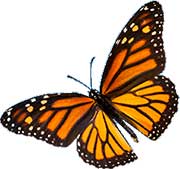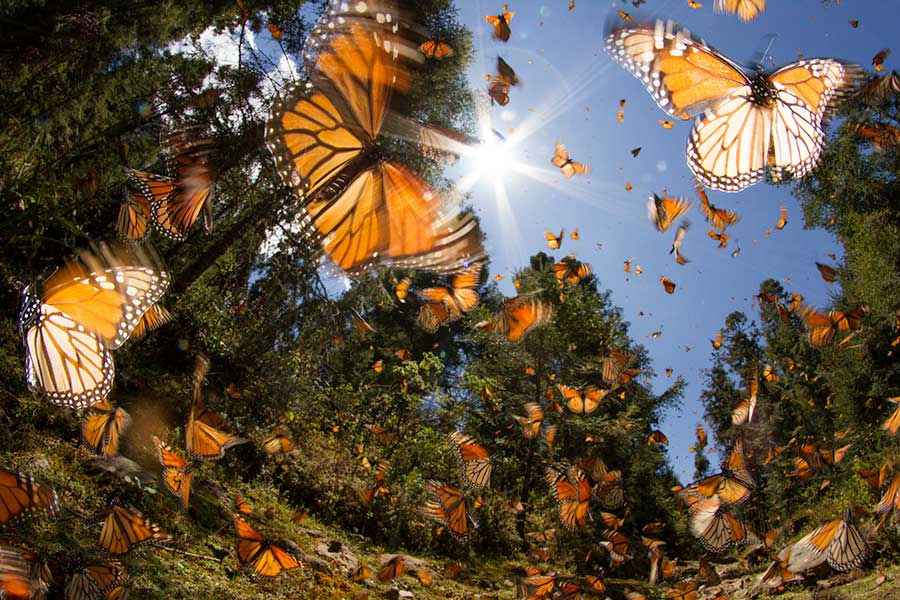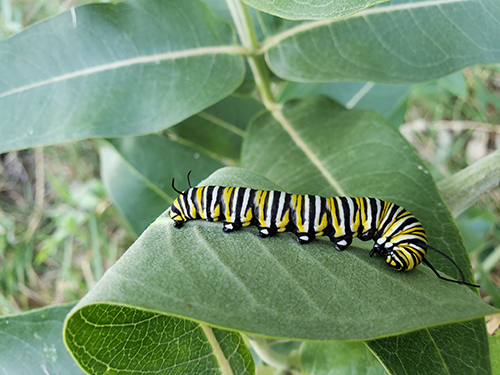Monarch butterflies in Utah need your help
Populations are declining in the West
Paul Thompson
Deputy Director, Department of Natural Resources Recovery Programs Office

Have you noticed that you don't see as many monarch butterflies as you did a few decades ago or even a few years ago? I grew up in the Midwest and I can remember seeing hundreds of monarchs a day as a young boy. I searched out and played with monarch caterpillars and I was even more excited when I found a chrysalis (cocoon) because I would watch it develop into an adult monarch butterfly. Monarchs were part of life; we even learned their life cycle in middle school biology class.

Butterflies — and other pollinators like birds, bats and bees — are vital to creating and maintaining the habitats that many animals rely on for food and shelter. We need pollinators.
I moved to Utah 25 years ago and I remember seeing monarchs regularly, but in recent memory, I haven't seen more than a handful in a given summer.
Monarchs matter
More than beautiful, monarch butterflies contribute to the health of the planet. Butterflies — and other pollinators like birds, bats and bees — are vital to creating and maintaining the habitats that many animals rely on for food and shelter. We need pollinators.
How do monarchs behave?
The life history of a monarch is truly amazing, especially for an insect. From their winter home, they migrate north over the summer feeding on nectar and breeding on milkweed plants and the last generation senses the coming of the winter by angle of the sun and the shorter days. This generation of monarch knows it must fly thousands of miles back to either central Mexico (monarch populations east of the Rocky Mountains) or the coast of California (monarchs west of the Rocky Mountains) to wait out the winter.
Thousands of butterflies somehow find one another in these winter locations and huddle in trees together for months. The monarch generation that migrates south can live six to nine months as they must make their trip south, wait out the winter months and then travel north again in the spring. As they begin their migration north in the spring, they must find milkweed plants, as milkweeds are the only host plant used by monarch caterpillars.
The monarch then has enough energy to mate and lay eggs on the milkweed. The caterpillars eat the milkweed as they grow, then develop a chrysalis (cocoon) and hatch as a beautiful butterfly. These generations of monarchs only live an estimated three to four weeks, at which time they breed again before they die.
The toxic chemicals present in the milkweed make the butterflies poisonous to birds and other predators. Other butterflies mimic the monarch's orange color in the hope they also avoid being a bird's meal!
Monarch populations are declining
Monarch populations have been declining for several decades due to many factors, including a loss of their winter habitat, increased and widespread misuse of pesticides and reduced milkweed and flowering plants that sustain them.
The population in Utah and the West has declined from over a million monarchs in the late 1990s to just 200,000 in recent years based on overwintering counts of adult monarch butterflies in California by the Xerces Society — a science based non-profit group that works to protect insects and their habitats. The count in 2018 was the lowest on record at around 30,000 monarchs.
To better coordinate monarch conservation work in the West and improve their numbers, state wildlife agencies organized a monarch working group that developed a Western Monarch Conservation Plan to help the western Monarch population.
You can help
If you would like to help monarchs in your own yard, you can very easily by making sure you have nectar-rich flowering plants from spring through the fall. Not only will this benefit monarchs, but you'll be helping native bumblebees in Utah that also are declining!
If you plant milkweed in your yard, you might be lucky enough to see monarchs stop and breed. While there are several varieties of milkweed in Utah, the two most common are Showy and Swamp milkweeds. You may be able to find seed from these plants near your house along streams or in wet areas, or if you prefer, it's possible to find the seeds for sale. You can also talk to your local native plant nursery about carrying milkweeds as part of their inventory.

From their winter home, monarchs migrate north over the summer feeding on nectar and breeding on milkweed plants.
While some monarch butterflies disperse from California overwintering sites and migrate to and through Utah, it is not clear how important Utah is to the western monarch butterfly as a whole.
To better understand this question, the Utah Department of Natural Resources, Xerces Society, Utah Hogle Zoo, Wild Utah Project and others are organizing monarch and milkweed surveys, and we need your help! This Survey 123 phone app allows anyone to record monarch and milkweed information. I encourage you to download this app and help gather critical data for the State of Utah.
Once you have the app, you can record monarch data in two different ways: 1) simply document and report monarch and milkweed sightings anytime, anywhere in Utah and/or 2) take part in a larger effort to assist in validating and refining a western monarch habitat model. Find more information on the phone app and this critical data collection effort at the Monarch Butterfly Conservation in Utah website.
I have the Survey 123 app loaded on my phone and I plan on searching out some milkweed stands this summer so I can document more than a few monarchs — hopefully you will too! If you have questions regarding the phone app or its use, please contact Mindy Wheeler (This email address is being protected from spambots. You need JavaScript enabled to view it.) who developed the app or me, Paul Thompson (This email address is being protected from spambots. You need JavaScript enabled to view it.).
















